Exhibition place:杭州大厦新B座5层
Exhibition time:2022.2 - 2022.5
Clothes are considered the second skin of the human body. It is the functional skin by protecting the human body from wind and rain, driving away cold, and keeping the body warm. It is also a cultural skin that silently tells the wearer’s background, identity, aesthetics, habits, and even aspirations. This layer of skin has been negotiating with the human body for long, sometimes it is trying to narrow the women waists as slim as possible, while sometimes trying to expand the dress that would reach to the most impressive profile. Sometimes it has to be extraordinarily extravagant and overdecorated, and sometimes it serves just as simple, natural, and functional dresses. The costume silhouettes are mirrors of different historical times. The political, technological, economical, and conceptual changes during the development of the periods are also reflected in the daily garments people wear.
To kick off the first exhibition in the “NSM·Fashion Museum” in Hangzhou Tower on the occasion of China National Silk Museum’s 30th anniversary, the museum selected about 80 pieces/sets of objects from its Western fashion collection. The exhibition shows costumes from the 18th to 20th centuries chronologically, for example, the 18th-century corset, 19th-century Romantic style dresses, among others. In the mid-19th century, independent designer emerged as a profession. The exhibition also features the works of famous designers such as Jeanne Lanvin, Pierre Balmain, and Yves Saint Laurent, accompanied by exquisite shoes, hats, and handbags, emphasizing the flourishing development of fashion design in the 20th century.
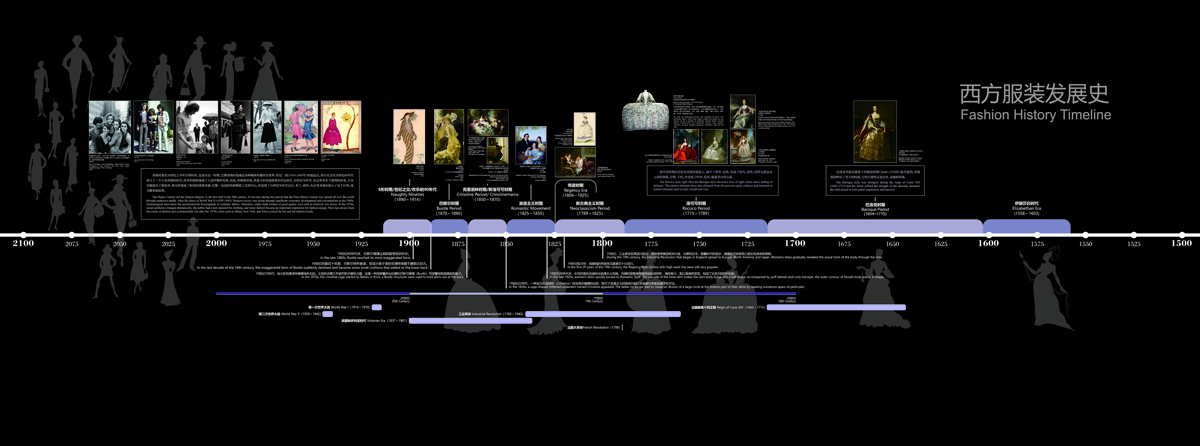
Fashion History Timeline
原图下载:![]() Fashion History Timeline.rar
Fashion History Timeline.rar
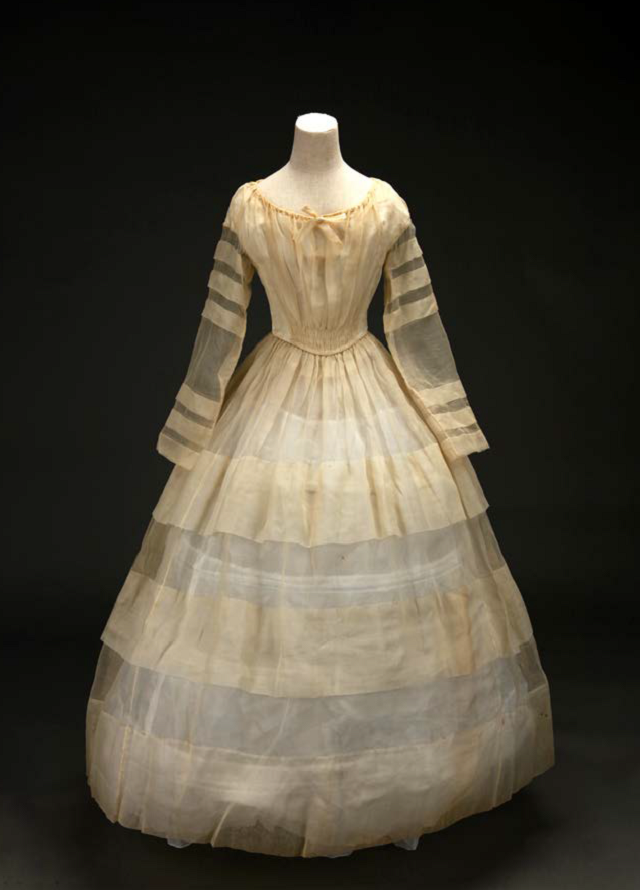
Beige Linen Long-Sleeve Tea Gown
1840–60s
Collection of China National Silk Museum
White afternoon tea gown are generally worn during summer. The using fabrics for tea gowns are always fine cotton, linen and chiffon. Fine linen with good quality is a sign of wealth, and white, as a very difficult color to retain, has always been a common symbol of wealth. In the 1850s, a bell shaped petticoat named Crinoline appeared, which stretched the skirt wide and shaped like a bird cage.
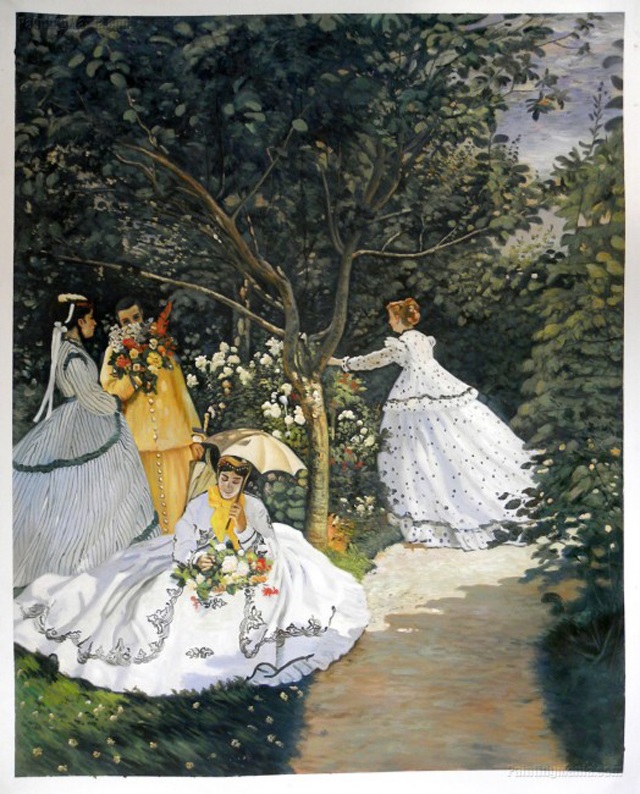
Women in the Garden, Claude Monet, 1866-1867.
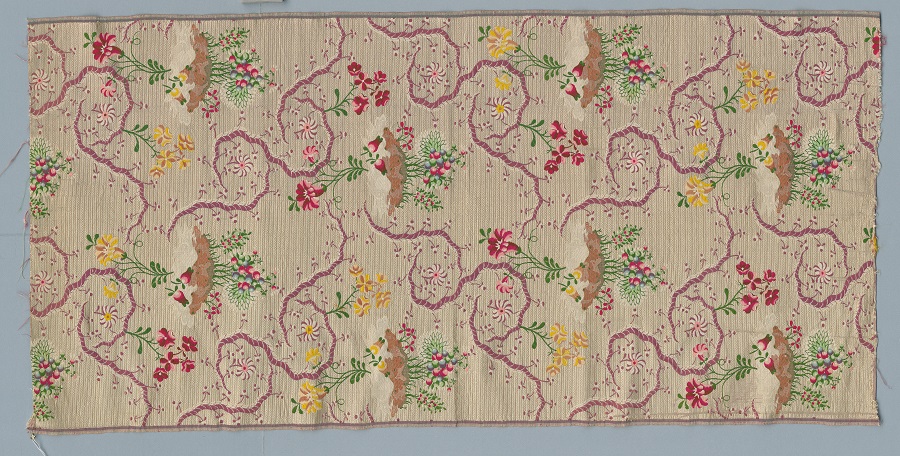
Fabric with Floral Design (Britain)
1750s
Collection of China National Silk Museum
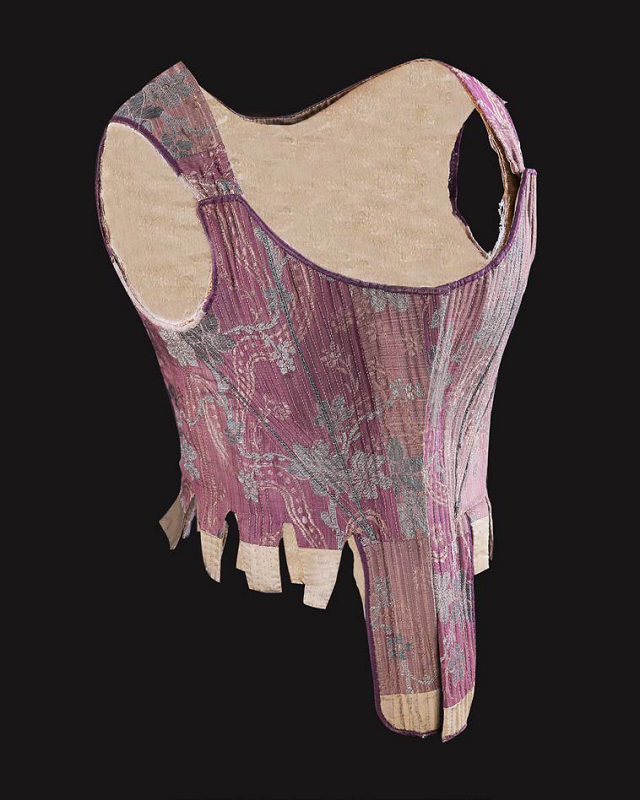
Brocade Whale Bone Corset
Middle 18th century
Collection of China National Silk Museum
Corset is a direct tool to shape the ideal image of women for hundreds of years from the Renaissance to the 19th century. It is often used to exaggerate women’s chest shape, waist line and hips and disperse the pressure from the bustle. Its material, structure and shape affect the posture and movement of the wearer. While emphasizing the sexy outline of female characteristics, it greatly weakens the motor function.
The first corsets made of whale bones appeared in the Baroque period. This whale bone support corset was once an old acquisition of the Metropolitan Museum of Art in New York. It is spliced with brocade fabric decorated with flower patterns and lined with linen. It is a typical style in the mid-18th century. Lined with several whale bones, the whole corset is short and small, the hem is equipped with hanging pieces, and the wire lock buttonholes are hidden in the two downward extending hanging pieces in the front and middle.
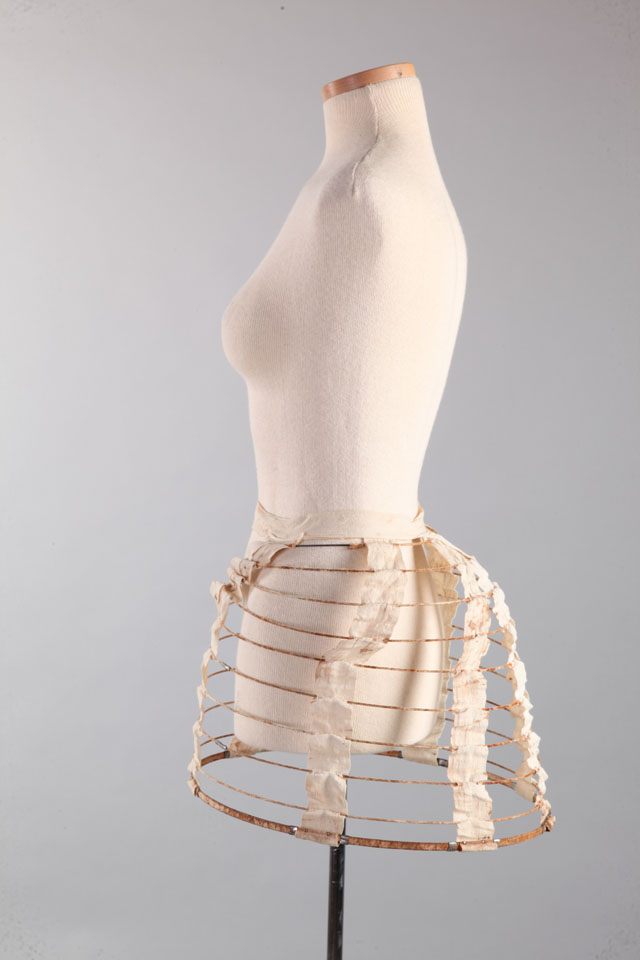
Short Bustle
1870–90s
Collection of China National Silk Museum
A Bustle is a type of framework used to expand the fullness or support the drapery of the back of a woman's dress, occurring predominantly in the mid-to-late 19th century. Bustles were worn under the skirt in the back, just below the waist, to keep the skirt from dragging. Bustles were worn in different shapes for most of the 1870s and 1880s, with a short period of non-bustled, flat-backed dresses from 1878 to 1882. Bustles were often stiffened with horsehair to retain their shape and give form to the dress. Sculpted pleats and ruffles were very popular, as was the ‘waterfall’ bustle, which cascaded down the back of the dress.
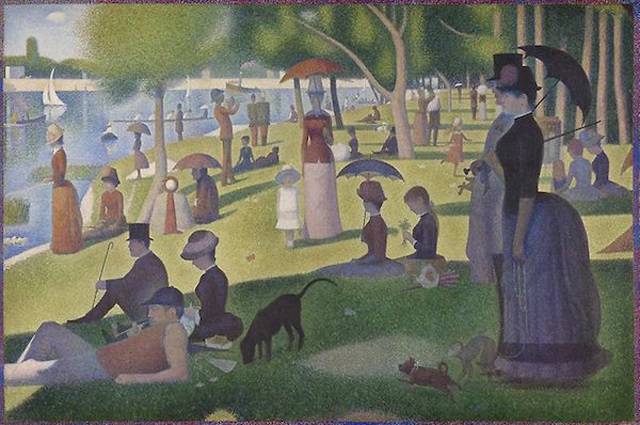
A Sunday Afternoon on the Island of La Grande Jatte, Georges Seurat, 1884.
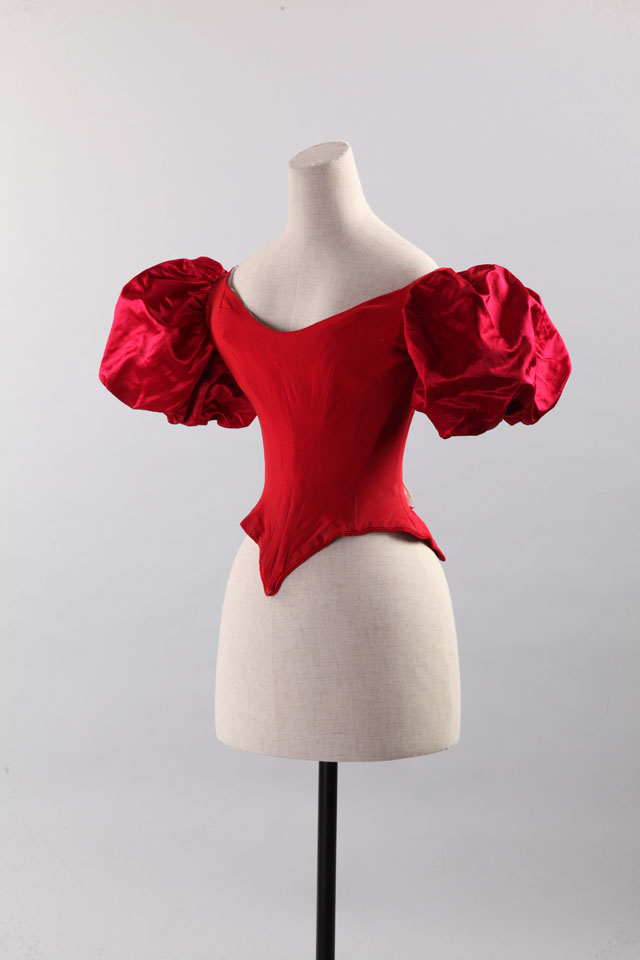
Red Silk Bodice with Puff Sleeves
1825–1840
Collection of China National Silk Museum
The pinnacle of the Romantic Movement in dress was reached around 1830. The silhouette had made the transition from the columnar to the X- shape, wide at shoulder and hem while narrow at the natural waist-line. The sleeve had grown steadily into the gigot shape, or “leg of mutton”, as seen on this red bodice.
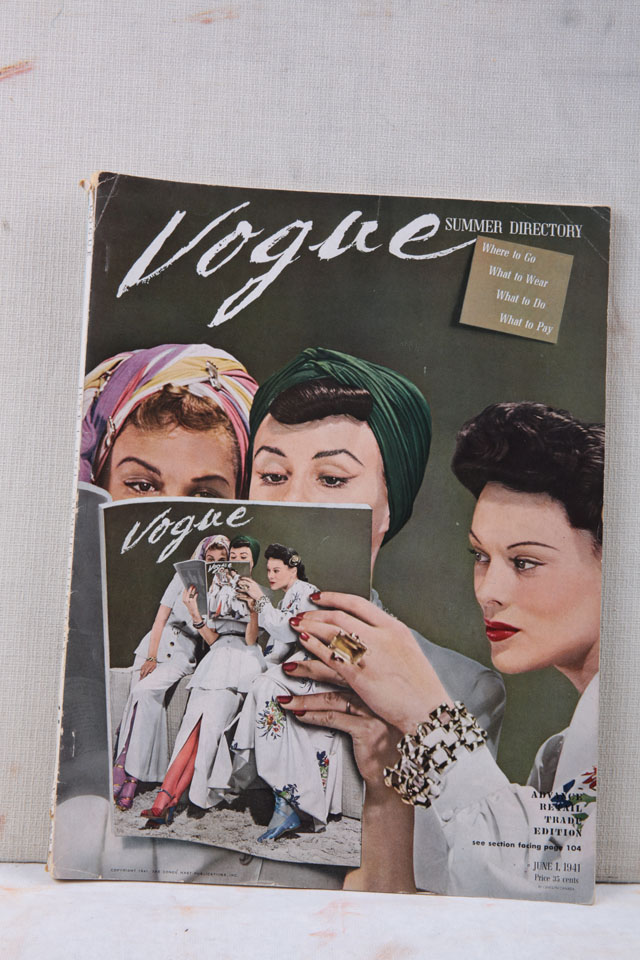
Vogue Magazine
June 1, 1941
Collection of China National Silk Museum
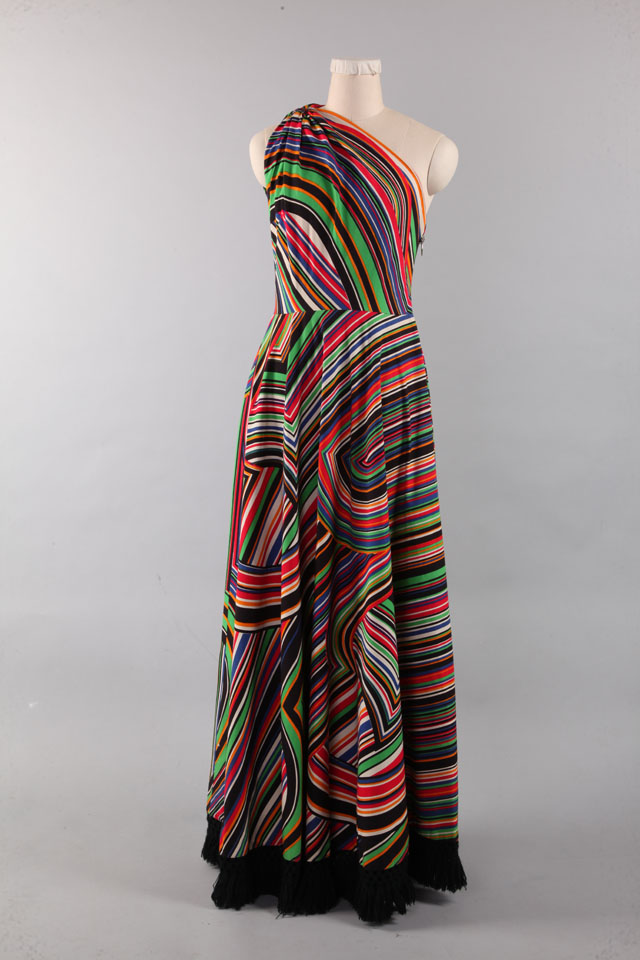
Geometric Striped Rainbow Op Art Asymmetrical Gown
Designer: House of Lanvin
1970s
Collection of China National Silk Museum
This cotton one shoulder striped dress was produced by the House of Lanvin. The side of the skirt is zipped and the skirt is decorated with black tassels. The vibrant and psychedelic graphic rainbow print dress is standing out in graphic stripes and geometric pattern of various widths and colors. The one shoulder front and back is gather onto a silver metal ring draping diagonally across the bodice onto the other side where there is a large decorative/functional metal zipper with a metal ring.
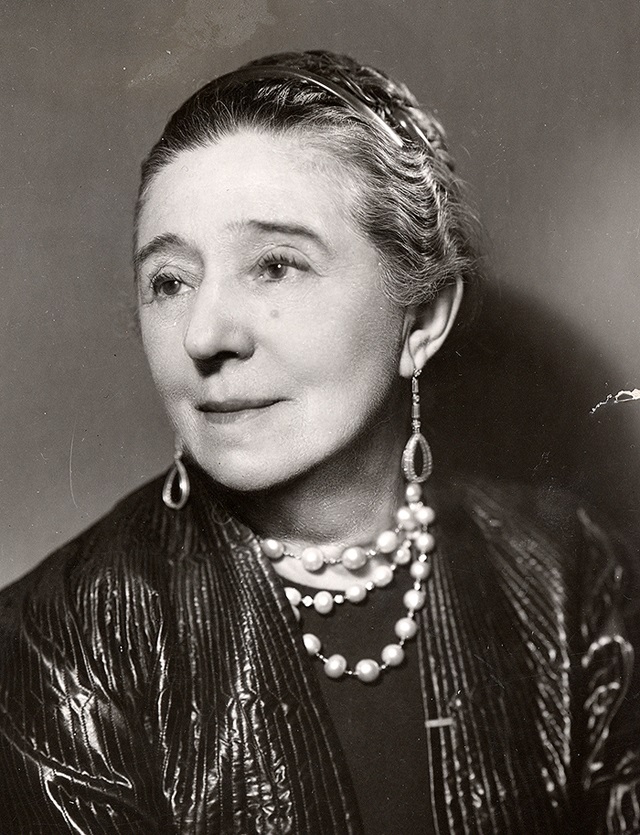
Portrait of Jeanne Lanvin (1867–1946)
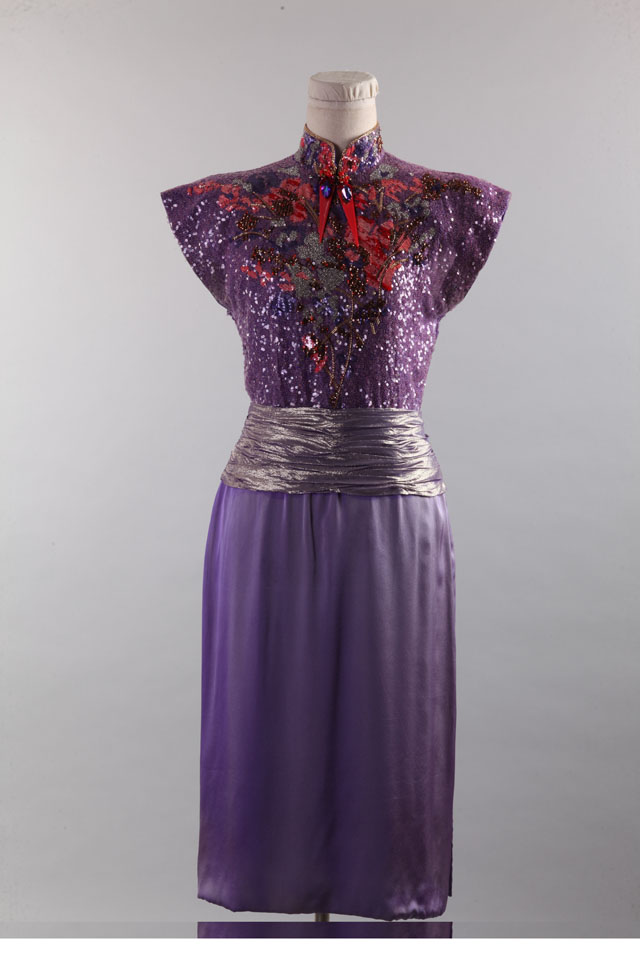
Purple Oriental Style Cocktail Dress
Designer: Jean-Louis Scherrer
1985–1986
Collection of China National Silk Museum
Scherrer joined Christian Dior as an assistant designer alongside Yves Saint Laurent in 1956. Following Dior's death in 1957, Scherger worked under Saint Laurent, and then for Louis Féraud, before launching his own fashion house in 1962. In the mid-1960s Scherrer had an agreement with the American department store Bergdorf Goodman to grant them exclusive rights to reproduce and resell his designs in the United States.
His clients included Anne-Aymone Giscard d'Estaing, Jacqueline Kennedy Onassis, and Raquel Welch, who wore Scherrer animal-print dresses in the 1977 film L'Animal. By the 1980s, his work was known for its opulence and luxury, with many garments hand-beaded, embroidered and lavishly trimmed. This Oriental style cocktail dress was designed for the famous actor Luth Ford for her trip to India in 1986.

Jean-Louis Scherrer (1935–2013) and a female model

Long Black Skirt and Short Green Silk Lantern Skirt
Designer: Pierre Balmain
1974
Collection of China National Silk Museum
Balmain's designs were noted for fine tailored daywear, along with ultra-feminine evening gowns from 1940s. This evening dress designed for Donna Michelle, who was an American model, actress, and photographer, in 1974. The full-length evening dress was covering one shoulder only, and dark green balloon skirt outside the black foundation dress has a wide violet belt.
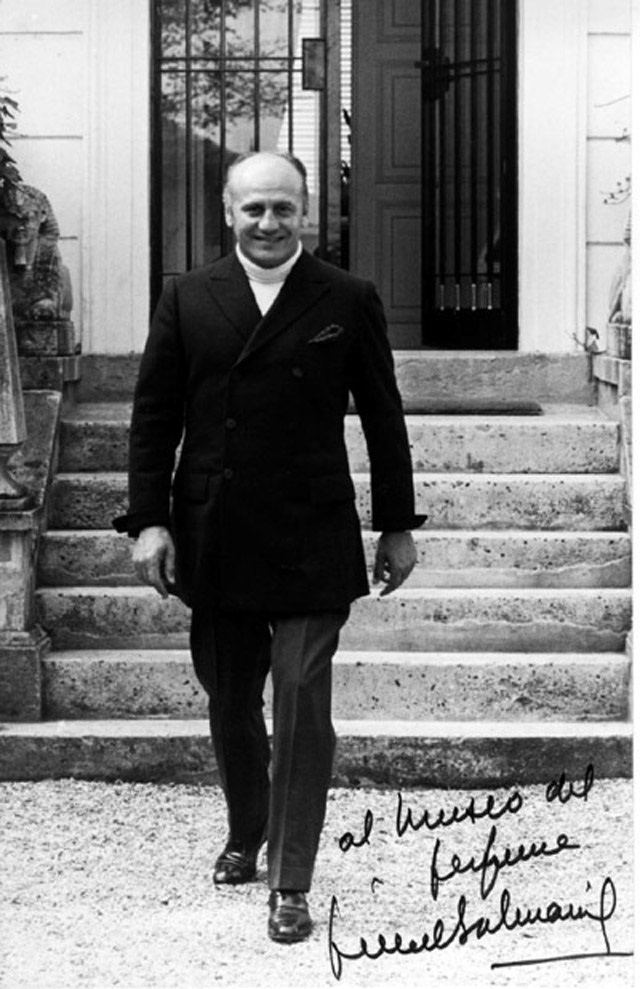
Portrait of Pierre Balmain (1914–1982)

Marilyn Monroe White Halter Dress
1950s
Collection of China National Silk Museum
This white halter dress is similar to the famous white dress worn by the American film star Marilyn Monroe in the film The Seven Year Itch. The dress is finely pleated on the waist to increase the scale of the lower skirt, and thick fabrics are used to prevent the skirt from blowing.
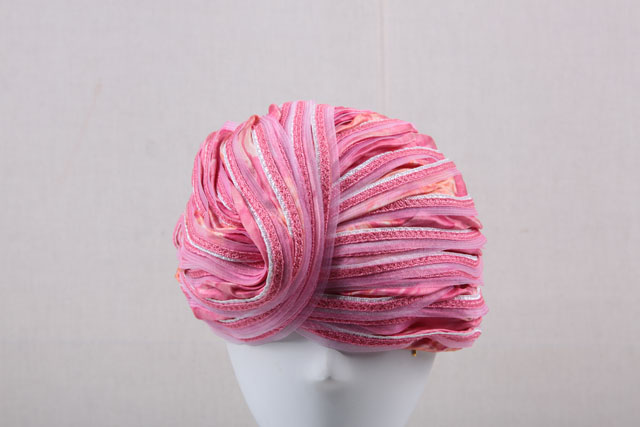
Pink Turban Style Beehive Hat
Brand: Christian Dior
1950s
Collection of China National Silk Museum
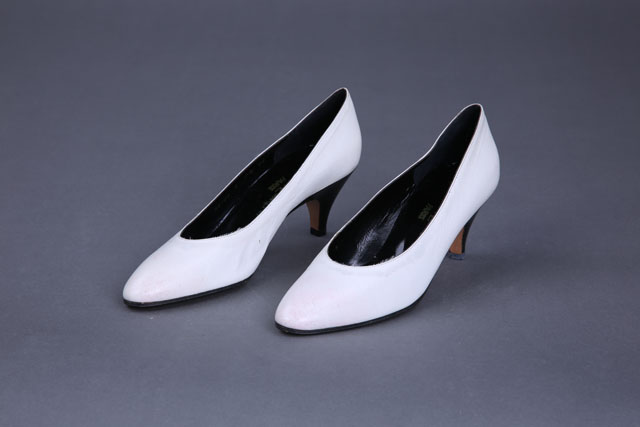
White Pointy Pumps with Black Insole
Brand: Yves Saint Laurent
20th century
Collection of China National Silk Museum
 Pay attention to us
×
Pay attention to us
×